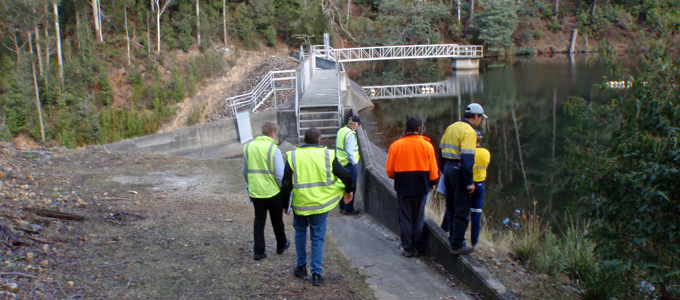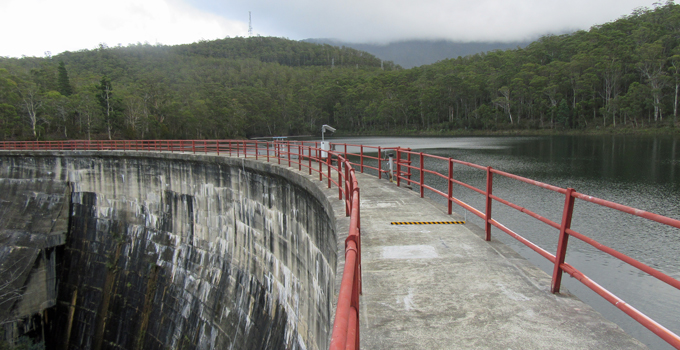THOUGHT LEADERSHIP
Portfolio risk assessment takes dam safety programs to the next level
A portfolio risk assessment allows owners of dams and other water assets to see the bigger picture of how to prioritise their efforts and resources to achieve the best safety result across their whole portfolio.
Constraints on budgets and resources remain key challenges for owners of dams and water assets, especially those with a large asset portfolio, as they attempt to reduce the risk to communities to an ‘as-low-as-reasonably-practicable’ level. Without a tool to prioritise safety works, it is impossible to use limited resources most effectively.
Dam owners have often overlooked the importance of prioritising their dam safety activities, resulting in resources being allocated equally to all dams or allocated randomly to selected dams.
For example, the traditional indexing method, which uses a standards-based deterministic approach to review deficiencies at a dam, does not look at the consequences of those deficiencies, so it fails to inform the dam owner of the associated dam safety risk.
Using a method such as this can often lead to defensive design, cost-ineffectiveness, blind upgrade, or a generic surveillance and monitoring program across all dams, and does not greatly assist the dam owner in managing the dam safety risk. Ultimately, resources may be wasted on low-risk dams, rather than used appropriately on dams with high safety risks.
Current best practice involves a risk-based probabilistic approach and takes into account the risk of failure of each dam to prioritise dam safety works. However, for a large dam portfolio, a full detailed risk assessment for all dams can be very costly and time consuming.
So, how can an owner of a portfolio of dam assets assess safety and prioritise investment without unnecessary effort or expense? The answer is portfolio risk assessment.
How portfolio risk assessment works
A portfolio risk assessment (PRA) is often a starting point for an effective dam safety program. It is not a detailed risk assessment of any particular dam, but an affordable high-level assessment at the portfolio level that presents to the dam owner the relative risk position of all dams. This enables the dam owner to better prioritise ongoing dam safety works and develop investment strategies.
In a PRA, the safety risk posed by each dam in the portfolio is usually assessed based on historically available information as well as information gathered in a workshop-type environment by an expert team of various disciplines. Key failure modes of each dam are identified, and the risks are quantified based on available information.

The key objective as a first step is to determine the first-pass risk position of the dams, followed by identifying any information gaps, strategy and priority to close these gaps. Output from a PRA can be tailored to suit organisational requirements, with risk positions determined in terms of societal, financial and political risks.
Flow-on benefits of the PRA process
PRA has proven to be a cost-effective tool in revolutionising an effective dam safety program for many dam owners in Australia and worldwide. It provides flow-on benefits to dam owners in managing their dam assets. In particular:
- Providing high-level focus and ease of reporting: A PRA provides an overview and high-level visibility and understanding of the current risk profile of the dam assets. This allows the dam owner to better focus on key dam safety issues, and makes reporting to senior management easier.
- Understanding relative risk and prioritising action: Establishing the risk profiles of all dams in a single risk plot not only informs whether the risk position of each dam is tolerable in accordance with industry best practice and guidelines, but also allows an understanding of the risk position of each dam relative to the others. This provides an opportunity for the high safety risk dams to be targeted first for dam safety activities, and allows prioritisation of dam safety recommendations.
- Best use of resources and identifying quick wins: Understanding the relevant dam safety risk profile provides clear direction for appropriately using resources to target mitigation of key risk items rather than attempting to implement all recommended actions at once, which is often not achievable. This also provides the opportunity to identify ‘quick win’ remedial works which may be less expensive yet significantly reduce risk.
- Ensuring key documentation is in place: Understanding the relevant safety risks of the dams also obliges the dam owner to ensure key documentation is in place, particularly for high safety risk dams. This may include dam safety emergency plans, operations and maintenance manuals, dam data books, hydraulic data, dam break inundation maps, and geotechnical reports.
- Reviewing surveillance and monitoring practices: A PRA provides an opportunity to review the existing dam surveillance and monitoring practice, and adopt a cost-effective risk-based approach to target the key failure modes rather than a blanket approach. As an example, a dam with a high risk of piping may require telemetered V-notches, whereas one without a high risk of piping may only require manually read V-notches or visual observations. In addition, the inspection frequency for dams with relatively low risk positions may be reduced, freeing up resources for use on dams with high safety risk.
- Improving dam safety emergency planning: An understanding of a dam’s key failure modes and failure consequences also allows improvement of critical dam safety information (e.g. event triggers, emergency evacuation), resulting in improved emergency planning.
Updating the PRA for continuous improvement
The outcome of a PRA would inform the knowledge gaps for any particular dams, and the necessary future works and investigations required to close those gaps. Following additional investigations, studies, remedial or upgrade works as a result of the initial PRA, it is good practice to update the PRA to review the portfolio risk and adjust the dam safety management strategy to achieve continuous improvement.
This will not only help dam owners to plan and prioritise their resources appropriately, but will also demonstrate to the regulator that an effective dam safety program is being implemented, which meets compliance requirements as well as industry best practices.
If you would like to discuss how Entura can assist you with assessing your dam risks through a portfolio risk assessment program, or apply the same PRA process to other key assets, please contact Shao Ng on +61 3 6245 4141 or Phillip Ellerton on +61 439 010 172.
About the authors
Shao Ng is a Senior Civil Engineer at Entura and has more than 16 years of experience in civil and dam engineering in Australia and overseas. Shao has considerable experience in project management, dam design and construction, geotechnical investigations, inspections and surveillance reviews, emergency planning, and dam operation and maintenance, and is familiar with national and international dam safety standards, guidelines and local regulatory requirements. Shao also has extensive experience in dam PRA.
MORE THOUGHT LEADERSHIP ARTICLES
October 5, 2016







